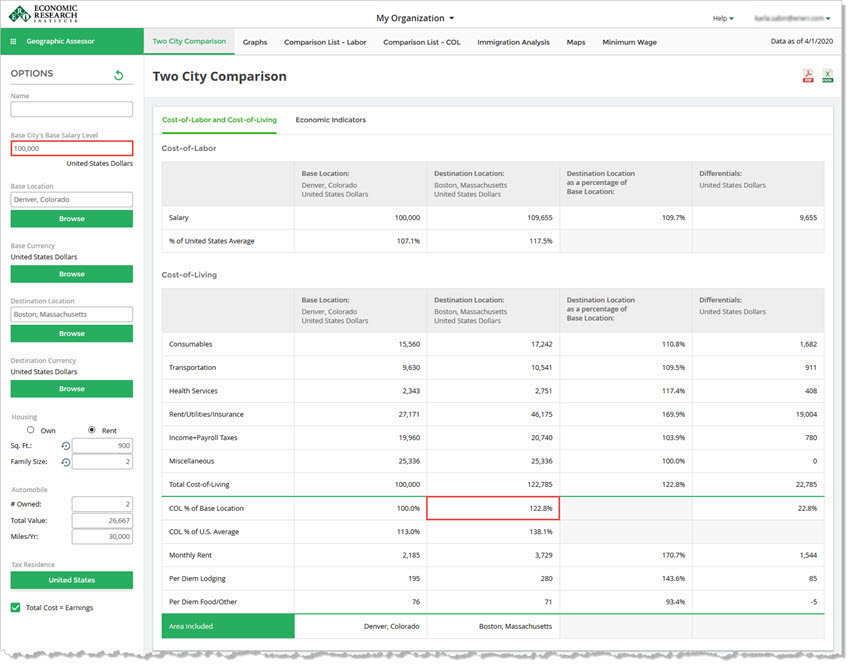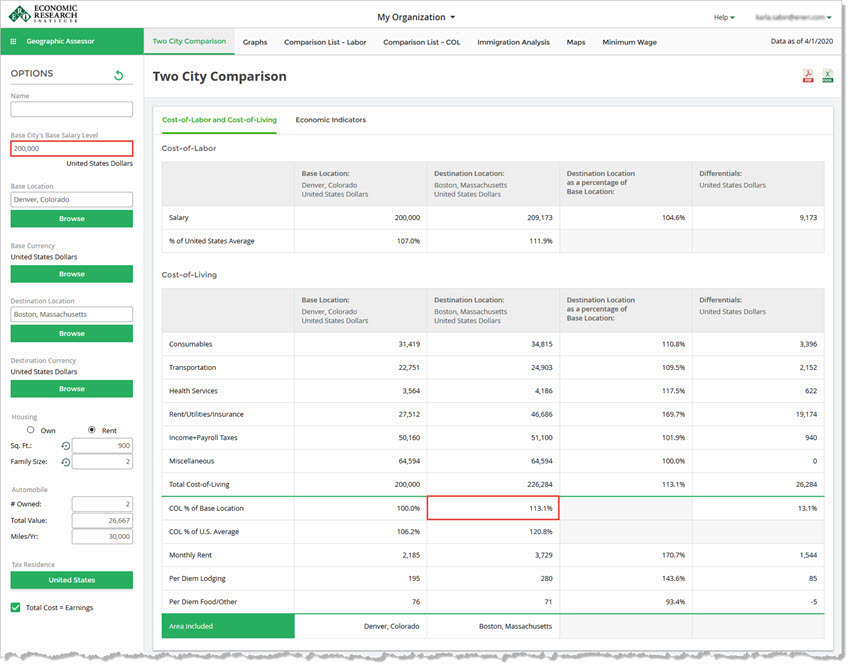QUESTION: Why does the COL percent differential decrease as Annual Earnings increase?
At lower earnings levels, it takes a larger percentage of Annual Earnings to cover the expenditures for housing, consumables, transportation, and health services for a professional/mid-management lifestyle estimate in the Geographic Assessor data. Another way to think about this is more and more of the typical expenditures are being covered as Annual Earnings increase, so more is available in the Miscellaneous expenditure category. The Geographic Assessor assumes the Miscellaneous expenditures are equal in both the Base and Destination (see Miscellaneous for complete definition). The Miscellaneous category becomes a higher percentage of Annual Earnings. The COL differential of Miscellaneous is always 0, so an increasing percentage of entire budget is not impacted by a COL differential.
In the example below, with a 900 square foot apartment rental at an earnings level of $100,000, the COL differential from Denver to Boston is a 22.8% COL increase. For the same parameters (900 square foot apartment rental and family size of 2), when the annual earnings increases to $200,000, the COL differential decreases to from 22.8% to 13.1%.

